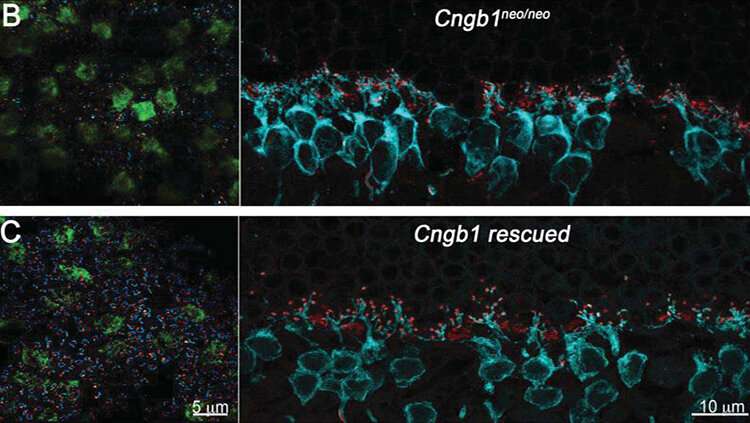Retinal cells with (bottom) and without gene therapy. Credit: Wang et al., JNeurosci 2019
Following gene therapy, the retina can restructure itself and regain normal light responses, according to research in mice published in JNeurosci. These results emphasize the plasticity of the retina and support ongoing development of treatments designed to save dying cells.
Blindness is often caused by the death of rod photoreceptors, a type of cell in the retina.
Current treatments have been developed that can save dying rods, but it was not known if the retina could rebuild itself after treatment, which is a key component of regaining vision.
Jeannie Chen, Alapakkam Sampath, Greg Field, and colleagues developed a mouse model with genetically defective rods that mimic developmental blindness disorders in humans.
Chen, Sampath, and Field's team examined the structure of the defective retina, as well as its responses to light, at different time points with and without gene therapy.
They observed that the rods that received gene therapy not only regained normal light responses, but also recovered normal connections to other retinal neurons.
More information: Activation of Rod Input in a Model of Retinal Degeneration Reverses Retinal Remodeling and Induces Formation of Functional Synapses and Recovery of Visual Signaling in the Adult Retina, JNeurosci (2019). DOI: 10.1523/JNEUROSCI.2902-18.2019
Journal information: Journal of Neuroscience
Provided by Society for Neuroscience






















